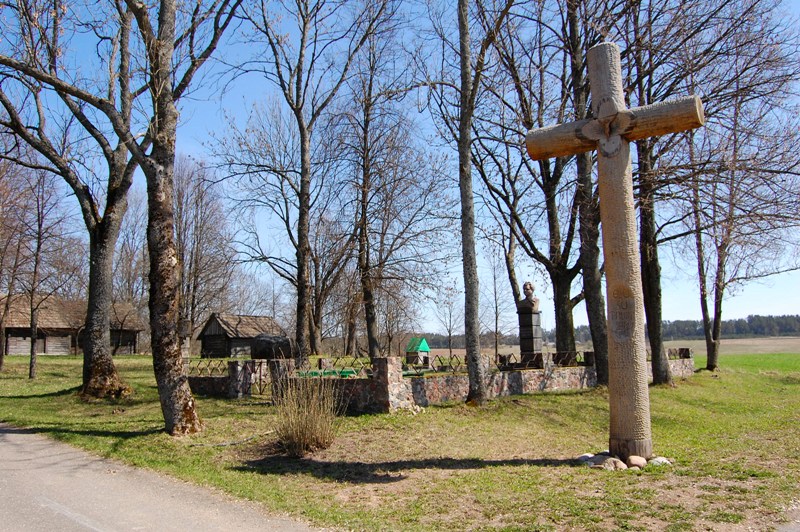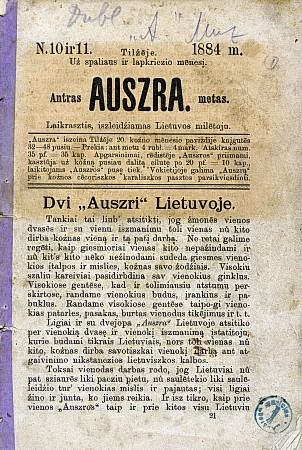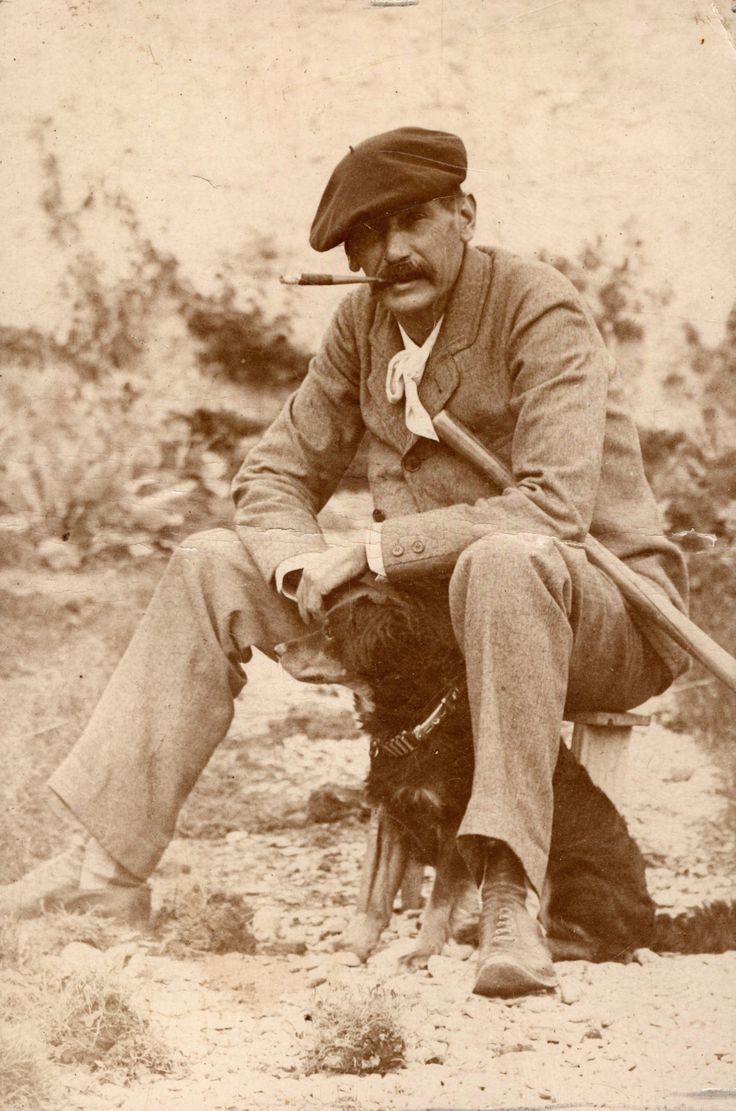|
Antanas Kriščiukaitis
Antanas Kriščiukaitis, also known by the pen name Aišbė (24 July 1864 - 30 October 1933) was a Lithuanian writer and judge who served as the chairman of the Supreme Tribunal of Lithuania from 1918 until his death in 1933. A Lithuanian Society of Jurists member, Kriščiukaitis greatly influenced the development and modernisation of Lithuanian law. Kriščiukaitis was born in Suvalkija to a family of well-off Lithuanian farmers. Already as a student at the Marijampolė Gymnasium, he started contributing articles to the Lithuanian press. He studied law at the University of Moscow and joined a secret society of Lithuanian students, chaired by Petras Leonas. After his graduation in 1890, he worked as interrogator and judge in Moscow, Mitau (Jelgava), Tikhvin and Novgorod raising to the rank of State Councillor. He returned to Lithuania in 1918 and became chairman of the Lithuanian Tribunal. He became a professor of criminal law at the newly established University of Lithuania in ... [...More Info...] [...Related Items...] OR: [Wikipedia] [Google] [Baidu] |
Supreme Tribunal Of Lithuania
The Supreme Tribunal of Lithuania () was the highest court in interwar Lithuania. Officially established in December 1918, the court held its first proceedings in August 1919. Initially, it served as an appeals court for cases first decided by the district courts. Its competency was steadily expanded to encompass cases referred from the Army Court in July 1919, cassation cases from the justices of the peace in June 1921, cases from the Klaipėda Region (Memelland) in 1923, and certain functions of an administrative court. The judicial reform in 1933 created a new appeals court leaving the Supreme Tribunal with functions of a court of cassation and an administrative court. Its main task was to interpret and consistently apply the laws. The tribunal handled some controversial high-profile cases, including the case of Prime Minister Augustinas Voldemaras and corruption cases of Prime Minister Vytautas Petrulis and Minister of Foreign Affairs Juozas Purickis. The court was abolished ... [...More Info...] [...Related Items...] OR: [Wikipedia] [Google] [Baidu] |
State Councillor (Russia)
State Councillor (, statskiy sovetnik) was the civil position (class) in the Russian Empire, according to the Table of Ranks introduced by Peter the Great in 1722. That was a civil rank of the 5th class and equal to those of Brigadier in the Army, Captain-Commander in the Navy, and or Grand Cupbearer in the Court. In 1796, the rank of Brigadier was canceled in the Army, so the rank of State councillor was placed between ranks of Major General and Colonel. Until 1856, the rank gave the right of hereditary nobility; later, that threshold was raised to the 4th class. The rank holder should be addressed as '' Your High Born'' (, Vashe Vysokorodie). Overview State councillors usually served as vice-governors, vice-directors of large departments, or chairmen of the state chamber. In the middle of the 19th century, the rank was the lowest in the top group of state officials. This group (from 1st to 5th grade) represented the highest state establishment defining the government policy. Ran ... [...More Info...] [...Related Items...] OR: [Wikipedia] [Google] [Baidu] |
Imperial Russian Army
The Imperial Russian Army () was the army of the Russian Empire, active from 1721 until the Russian Revolution of 1917. It was organized into a standing army and a state militia. The standing army consisted of Regular army, regular troops and two forces that served on separate regulations: the Cossacks, Cossack troops and the Islam in Russia, Muslim troops. A regular Russian army existed after the end of the Great Northern War in 1721.День Сухопутных войск России. Досье [''Day of the Ground Forces of Russia. Dossier''] (in Russian). TASS. 31 August 2015. During his reign, Peter the Great accelerated the modernization of Russia's armed forces, including with a decree in 1699 that created the basis for recruiting soldiers, military regulations for the organization of the a ... [...More Info...] [...Related Items...] OR: [Wikipedia] [Google] [Baidu] |
University Of Saint Petersburg
Saint Petersburg State University (SPBGU; ) is a public research university in Saint Petersburg, Russia, and one of the oldest and most prestigious universities in Russia. Founded in 1724 by a decree of Peter the Great, the university from the beginning has had a focus on fundamental research in science, engineering and humanities. During the Soviet period, it was known as Leningrad State University (). It was renamed after Andrei Zhdanov in 1948 and was officially called "Leningrad State University, named after A. A. Zhdanov and decorated with the Order of Lenin and the Order of the Red Banner of Labour." Zhdanov's was removed in 1989 and Leningrad in the name was officially replaced with Saint Petersburg in 1992. It is made up of 24 specialized faculties (departments) and institutes, the Academic Gymnasium, the Medical College, the College of Physical Culture and Sports, Economics and Technology. The university has two primary campuses: one on Vasilievsky Island and the other o ... [...More Info...] [...Related Items...] OR: [Wikipedia] [Google] [Baidu] |
Alexander Pushkin
Alexander Sergeyevich Pushkin () was a Russian poet, playwright, and novelist of the Romantic era.Basker, Michael. Pushkin and Romanticism. In Ferber, Michael, ed., ''A Companion to European Romanticism''. Oxford: Blackwell, 2005. He is considered by many to be the greatest Russian poet,Short biography from University of Virginia . Retrieved 24 November 2006.Allan Reid, "Russia's Greatest Poet/Scoundrel" Retrieved 2 September 2006. as well as the founder of modern Russian literature [...More Info...] [...Related Items...] OR: [Wikipedia] [Google] [Baidu] |
The Gypsies (poem)
''The Gypsies'' () is a narrative poem in 569 lines by Alexander Pushkin, originally written in Russian in 1824 and first fully published in 1827. The last of Pushkin's four 'Southern Poems' written during his exile in the south of the Russian Empire, ''The Gypsies'' is also considered to be the most mature of these Southern poems, and has been praised for originality and its engagement with psychological and moral issues. The poem has inspired at least eighteen operas and several ballets. Outline The poem opens with an establishment of the setting in Bessarabia and a colorful, lively description of the activities of a gypsy camp there: The poem is written almost exclusively in iambic tetrameter, and this regular metre is established from the outset: × / × / × / × / Горит огонь; семья кругом Gorít ogón'; sem'yá krugóm × / × / × / × / × Готовит ужин в чистом поле (ll.9–10) Gotóvit úzhin v ... [...More Info...] [...Related Items...] OR: [Wikipedia] [Google] [Baidu] |
Juozas Tumas-Vaižgantas
Juozas Tumas also known by the pen name Vaižgantas (20 September 1869 – 29 April 1933) was a Lithuanian Roman Catholic priest and an activist during the Lithuanian National Revival. He was a prolific writer, editor of nine periodicals, university professor, and member of numerous societies and organizations. His most notable works of fiction include the novel ''Pragiedruliai'' (Cloud Clearing) and the narrative ''Dėdės ir dėdienės'' (Uncles and Aunts) about the ordinary village folk. Born to a family of Lithuanian peasants, Tumas was educated at a gymnasium in Daugavpils (present-day Latvia) and Kaunas Priest Seminary. He began contributing to the Lithuanian press, then banned by the Tsarist authorities, in 1889 or 1890. He was ordained as a priest in 1893 and posted to Mitau (present-day Jelgava, Latvia). In 1895, he was reassigned to Mosėdis in northwestern Lithuania. There he organized the publication of ''Tėvynės sargas'' and the book smuggling into Lithuania. His ... [...More Info...] [...Related Items...] OR: [Wikipedia] [Google] [Baidu] |
Russian Empire
The Russian Empire was an empire that spanned most of northern Eurasia from its establishment in November 1721 until the proclamation of the Russian Republic in September 1917. At its height in the late 19th century, it covered about , roughly one-sixth of the world's landmass, making it the list of largest empires, third-largest empire in history, behind only the British Empire, British and Mongol Empire, Mongol empires. It also Russian colonization of North America, colonized Alaska between 1799 and 1867. The empire's 1897 census, the only one it conducted, found a population of 125.6 million with considerable ethnic, linguistic, religious, and socioeconomic diversity. From the 10th to 17th centuries, the Russians had been ruled by a noble class known as the boyars, above whom was the tsar, an absolute monarch. The groundwork of the Russian Empire was laid by Ivan III (), who greatly expanded his domain, established a centralized Russian national state, and secured inde ... [...More Info...] [...Related Items...] OR: [Wikipedia] [Google] [Baidu] |
Varpas
''Varpas'' (literally: ''The Bell'') was a monthly Lithuanian-language newspaper published during the Lithuanian press ban from January 1889 to December 1905. Because its publication was illegal in Lithuania, then part of the Russian Empire, it was printed in Tilsit (current Sovetsk) and Ragnit (current Neman) in German East Prussia and smuggled into Lithuania by the knygnešiai (book smugglers). ''Varpas'', with circulation of about 500 to 1,000 copies, played a pivotal role in the Lithuanian National Revival. ''Tautiška giesmė'', one of poems by founder and editor Vincas Kudirka written to commemorate the 10th anniversary of ''Varpas'', became the Lithuanian national anthem.Classic Lithuanian Literature Anthology Editorial staff of ''Varpas'' later started two more specialized publications: more practical '' Ūkininkas'' (''The Farmer'', 1890–1905) for less educated peasants and apolitical '' Naujienos'' (''News'', 1901–1903) for general public. History After the first n ... [...More Info...] [...Related Items...] OR: [Wikipedia] [Google] [Baidu] |
Aušra
''Aušra'' or ''Auszra'' (literally: ''dawn'') was the first national Lithuanian newspaper. The first issue was published in 1883, in Ragnit, East Prussia, Germany (newspaper credited it as ) East Prussia's ethnolinguistic part - Lithuania Minor. Later, it was published monthly in Tilsit (present-day Sovetsk). Even though only forty issues were published and the circulation did not exceed 1,000, it was a significant event as it marked the beginnings of the Lithuanian national rebirth that eventually resulted in an independent Lithuanian State (1918–1940). This period, between 1883 and 1904, when the Lithuanian press ban was enforced by Tsarist authorities, has been referred to as the ''Aušros gadynė'' (the Dawn Period). The printing ceased in 1886 as a result of financial issues. History After the Russian authorities denied permission to publish a Lithuanian newspaper in Vilnius, Jonas Šliūpas proposed to publish it in East Prussia, Germany. However, he was perceived ... [...More Info...] [...Related Items...] OR: [Wikipedia] [Google] [Baidu] |
Feuilleton
A ''feuilleton'' (; a diminutive of , the leaf of a book) was originally a kind of supplement attached to the political portion of French newspapers, consisting chiefly of non-political news and gossip, literature and art criticism, a chronicle of the latest fashions, and epigrams, literary charade, charades and other literary trifles. The term ''feuilleton'' was invented by the editors of the French '' Journal des débats''; Julien Louis Geoffroy and Bertin the Elder, in 1800. The ''feuilleton'' has been described as a "talk of the town", and a contemporary English-language example of the form is the "Talk of the Town" section of ''The New Yorker''. In English newspapers, the term instead came to refer to an installment of a serial story printed in one part of a newspaper. History The ''feuilleton'' was the literary consequence of the Coup of 18 Brumaire (Dix-huit-Brumaire). A consular edict of January 17, 1800, made a clean sweep of the revolutionary press, and cut down ... [...More Info...] [...Related Items...] OR: [Wikipedia] [Google] [Baidu] |
Literary Realism
Literary realism is a movement and genre of literature that attempts to represent mundane and ordinary subject-matter in a faithful and straightforward way, avoiding grandiose or exotic subject-matter, exaggerated portrayals, and speculative elements such as supernatural events and alternative worlds. It encompasses both fiction (''realistic fiction'') and nonfiction writing. Literary realism is a subset of the broader realist art movement that began with mid- nineteenth-century French literature ( Stendhal) and Russian literature (Alexander Pushkin). It attempts to represent familiar things, including everyday activities and experiences, as they truly are. Background Broadly defined as "the representation of reality", realism in the arts is the attempt to represent subject matter truthfully, without artificiality and avoiding artistic conventions, as well as implausible, exotic and supernatural elements. Realism has been prevalent in the arts at many periods, and is in large ... [...More Info...] [...Related Items...] OR: [Wikipedia] [Google] [Baidu] |







